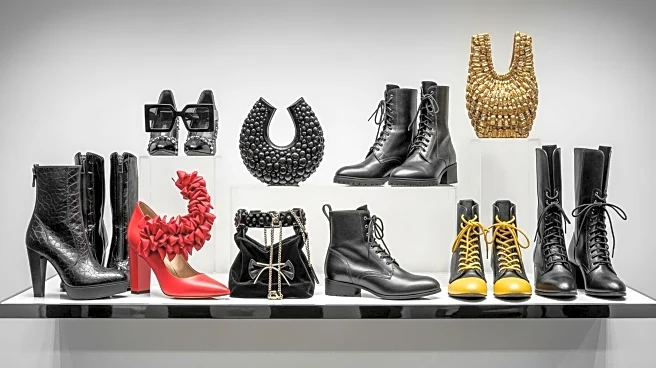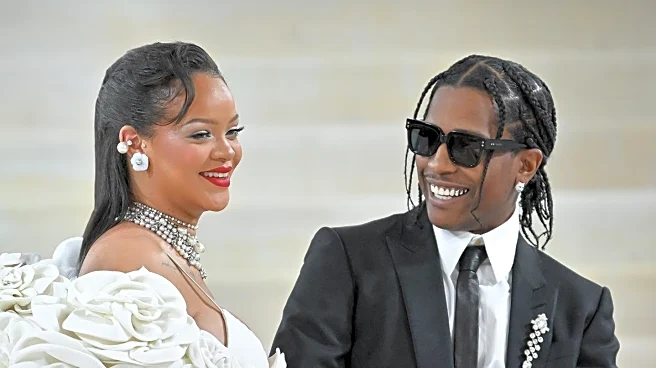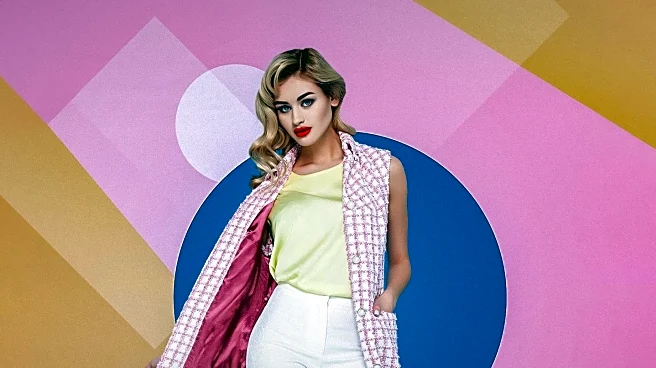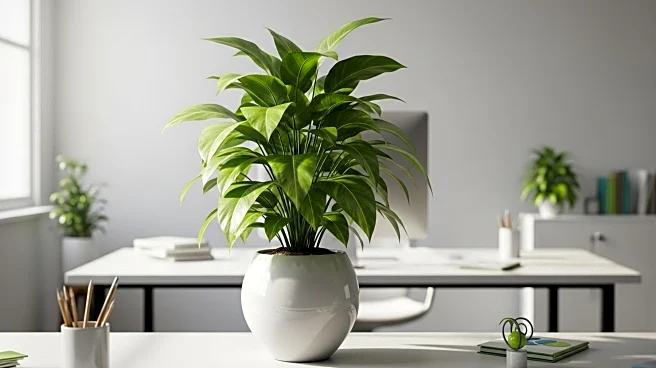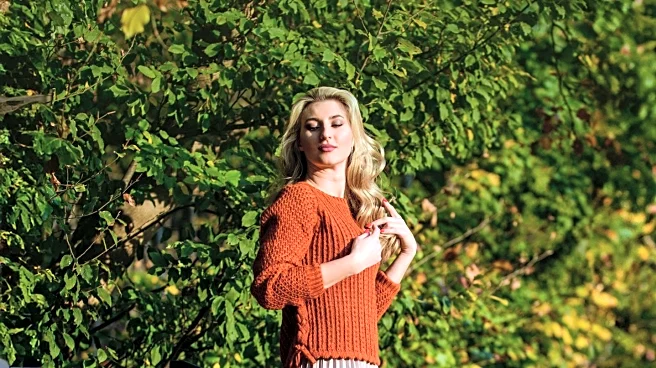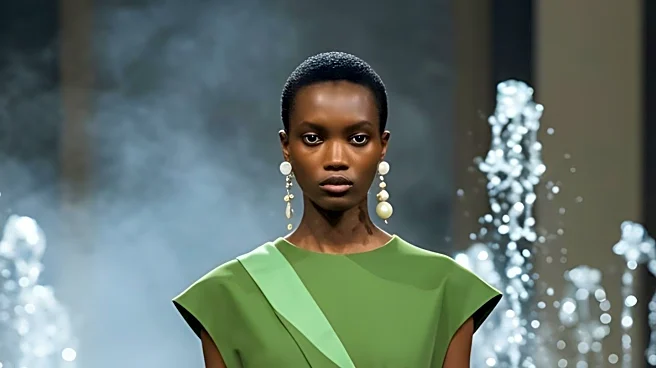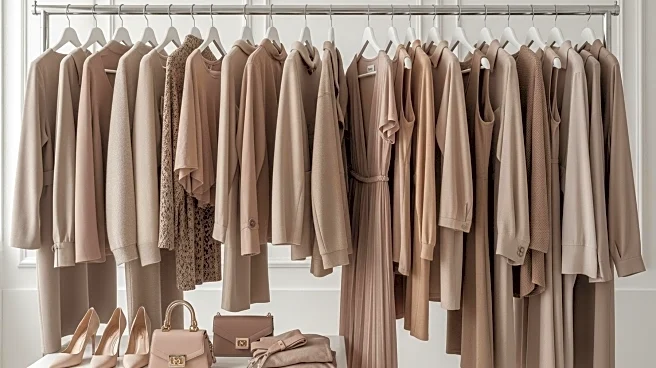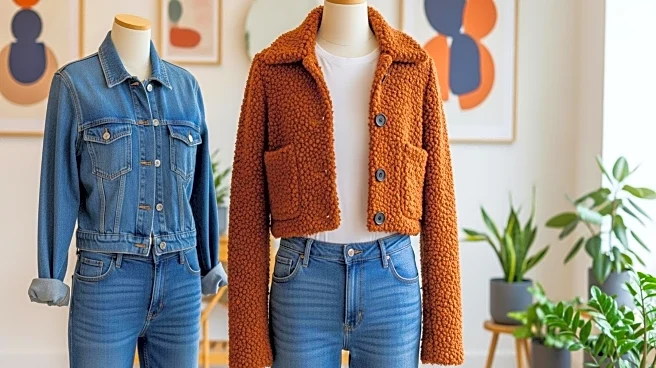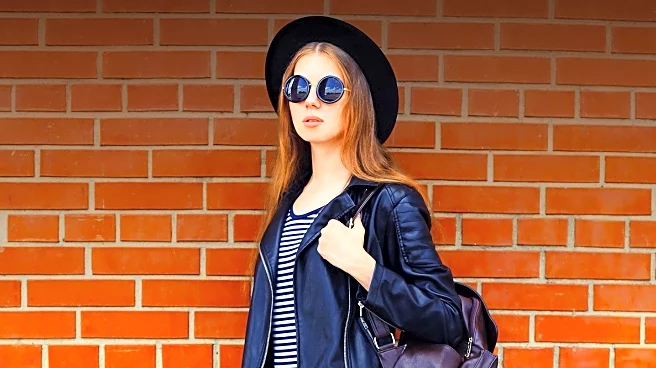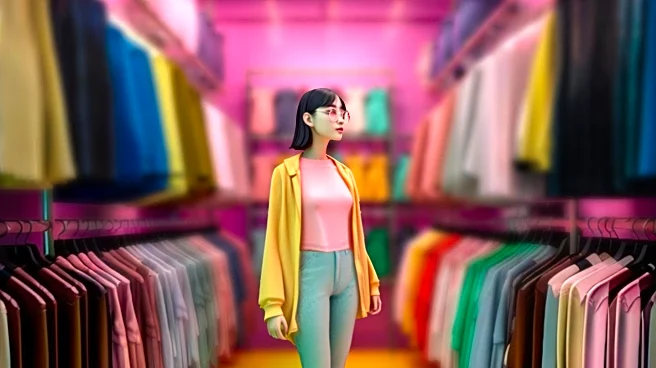What's Happening?
The fashion industry is witnessing a shift from 'stealth wealth' to 'rushed wealth,' characterized by a focus on effortless and hurried glamour. This trend is marked by beauty signals such as piece-y blowouts and one-coat nails, which suggest a busy lifestyle rather than overt luxury. Influencers and stylists are embracing 'turtleneck hair' and 'Olsen tucks,' styles that convey a sense of casual elegance without the need for meticulous grooming. The concept of 'rushed wealth' is gaining traction among fashion and beauty professionals, who are increasingly favoring products and styles that require minimal effort but still convey a sense of sophistication.
Why It's Important?
The 'rushed wealth' trend reflects broader societal shifts in perceptions of luxury and status. As consumers prioritize experiences and authenticity over material possessions, the fashion industry is adapting by promoting styles that align with these values. This trend could influence consumer behavior, encouraging a move away from traditional luxury goods towards products that offer convenience and practicality. Brands that successfully tap into this trend may benefit from increased engagement and loyalty among consumers seeking authenticity and simplicity in their fashion choices.
What's Next?
Fashion brands are likely to continue exploring the 'rushed wealth' trend, developing products and marketing strategies that emphasize effortless style. As this trend evolves, it may lead to collaborations between fashion and beauty brands to create integrated solutions that cater to consumers' desire for quick and easy glamour. Additionally, the trend may influence the design and functionality of fashion items, with a focus on versatility and adaptability to suit busy lifestyles.
Beyond the Headlines
The 'rushed wealth' trend raises questions about the sustainability of fast fashion and the ethical implications of promoting a lifestyle that prioritizes convenience over quality. As consumers become more aware of the environmental impact of their choices, brands may face pressure to balance the demand for effortless style with sustainable practices. This could lead to innovations in materials and production processes that align with the values of eco-conscious consumers.


